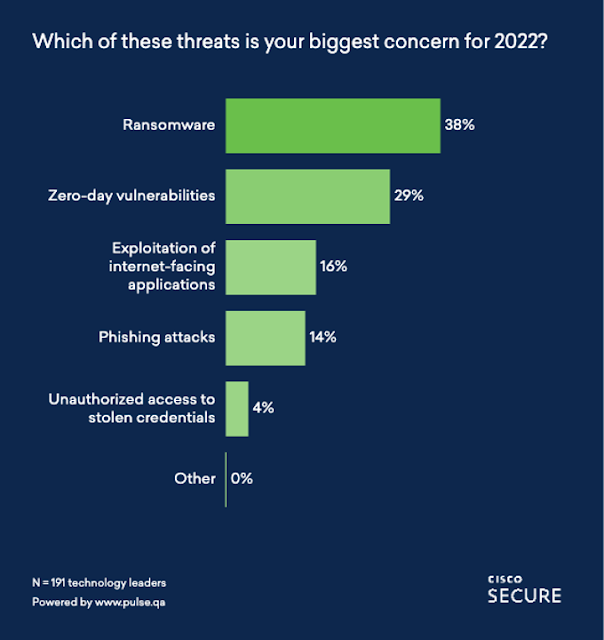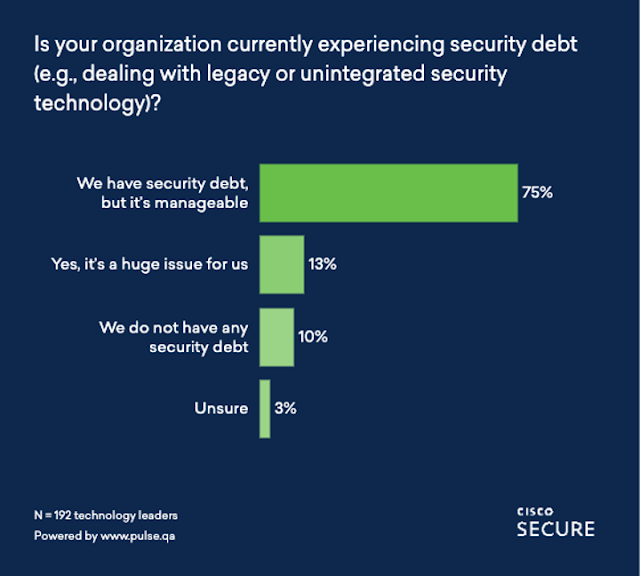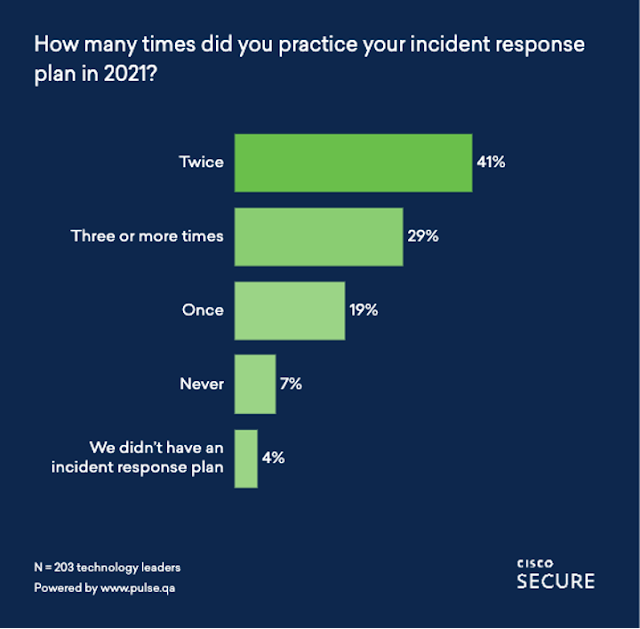Today, we’re pleased to launch our annual Defending Against Critical Threats report. Inside, we cover the most significant vulnerabilities and incidents of 2021, with expert analysis, insights and predictions from our security and threat intelligence teams across Cisco Talos, Duo Security, Kenna Security, and Cisco Umbrella.
It’s clear that 2021 – and, indeed, the start of 2022 – has been very challenging for security defenders. To bring our Defending Against Critical Threats: Analyzing Key Incident Trends report to life, I sat down with six expert threat hunters and analysts from these teams, and asked them to tell me about their findings on one specific cybersecurity threat, or incident, from the past 12 months. Each expert chose to discuss a topic which tells us a lot about the current priorities of threat actors – below you’ll find a brief summary on some of the key themes we covered.
We also conducted a survey among 190+ security and technology leaders via PulseQA to gauge their perspectives on the current threat landscape. We found that 66% of respondents felt that the complexity and volume of cybersecurity attacks had escalated in 2021, whilst 36% felt that attacks had stayed consistent with the previous year.
In the survey, we also asked about the top threat concerns security leaders had for 2022. Ransomware came in as the top concern, with 38% of respondents choosing that option. In the report, we discuss the evolution of ransomware and how it has reached a critical level for certain bad actors, provoking a more severe and structured governmental response. You’ll read about this in Matt Olney’s (Talos’ Director of Threat Intelligence and Interdiction) section about the Colonial Pipeline attack.

Matt’s section also discusses supply chain attacks, which as Matt says, is one of the most challenging types of threats we face today. Forty-three percent (43%) of our Pulse respondents told us that they were impacted in a supply chain attack in 2021. Be sure to check out this section for advice on how to make your organization a smaller target for attackers.
Zero-day vulnerabilities came in as the second biggest concern for security practitioners, according to our survey. The report discusses the impact of Log4j with Talos’ Incident Response Practice Lead Liz Waddell, and how it has continued to cause an impact in 2022. Liz also provides a detailed seven-point action plan on how to deal with future zero-day attacks.
Additionally, we also look at the most impactful disclosed vulnerabilities of 2021 with Jerry Gamblin, Kenna’s Director of Security Research (now part of Cisco). This section is particularly helpful for defenders who wish to move to a more predictive-based, prioritized vulnerability management plan.
You’ll also read about the impact of Emotet in Artsiom Holub’s (Senior Security Analyst for Cisco Umbrella) section. Emotet is a very powerful loader that came back from the dead in 2021 to cause a lot of destruction, and the signs are that it has some very nefarious plans for 2022.
Dealing with legacy or unintegrated security technology, or ‘security debt,’ is a topic we are very passionate about helping our customers to combat, and in this report, our Advisory CISO Dave Lewis discusses why it’s becoming an increasing target of opportunity for cyber criminals. We asked respondents if they were dealing with security debt and to what extent; the overwhelming majority (75%) said they were – but it was manageable. Unfortunately, 13% said that it’s a huge issue for them. Dave’s section contains plenty of advice on how to address this issue in your organization.

Finally, for readers interested in reading about a day in the life of a Talos threat hunter, you’ll no doubt find Ashlee Benge’s section on the rise of macOS malware very thought-provoking.
The expert analysis you’ll read in this report highlights the crucial role of our defenders, and the capabilities that we, as an industry, have built based on the meticulous study of past attacker behavior.
The good news is that according to our Pulse respondents, the majority of cybersecurity professionals undertake regular incident response testing. Forty-one (41%) are testing their plans twice a year, and 29% are testing more than three times a year. Only 4% said they didn’t have an incident response plan in place.

If you’re a security defender looking to prioritize your focus areas and address patterns of concern, we hope that this year’s report will be helpful to you. It was put together by a dedicated group of security leaders, whose job it is to spot key incident trends.
Here’s what we cover in the new Defending Against Critical Threats:
◉ Colonial Pipeline: Moving Beyond Ransomware Thoughts and Prayers with Matt Olney, Director of Threat Intelligence and Interdiction, Cisco Talos
◉ Security Debt: An Increasing Target of Opportunity with Dave Lewis, Advisory CISO, Cisco Secure
◉ The Most Critical Vulnerabilities (You Might Not Be Thinking About) with Jerry Gamblin, Director of Security Research, Kenna Security (now part of Cisco)
◉ Log4j and How To Plan for Zero-Days with Liz Waddell, Practice Lead, Cisco Talos Incident Response
◉ What’s Emotet Doing Now? with Artsiom Holub, Senior Security Analyst, Cisco Umbrella
◉ The Rise of macOS Malware with Ashlee Benge, Lead, Strategic Intelligence and Data Unification, Cisco Talos
Source: cisco.com







0 comments:
Post a Comment